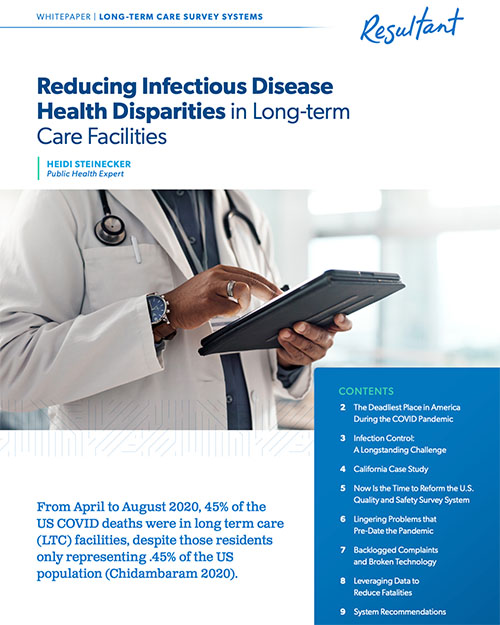Reducing Infectious Disease Health Disparities in Long-term Care Facilities
Share
The Deadliest Place in America During the COVID Pandemic
Infection Control: A Longstanding Challenge
California Case Study
Now Is the Time to Reform the U.S. Quality and Safety Survey System
Lingering Problems that Pre-Date the Pandemic
Given the lack of funding to support quality and safety surveys and the workforce to do them, it’s no wonder many of these facilities with poor patient care have flown under the radar for so long.
Backlogged Complaints and Broken Technology

The lack of immediate bi-directional communication and information causes confusion and places residents in danger when safety situations aren’t addressed immediately and documented in an automated system. Furthermore, a lack of modernized technology causes lack of transparency and trust for the concerned family members who find it difficult to access information about what’s happening in their loved one’s facility.
Leveraging Data to Reduce Fatalities
System Recommendations
We have the tools and strategies needed to reduce this health disparity in our growing aging population, and the time is now to use them.




